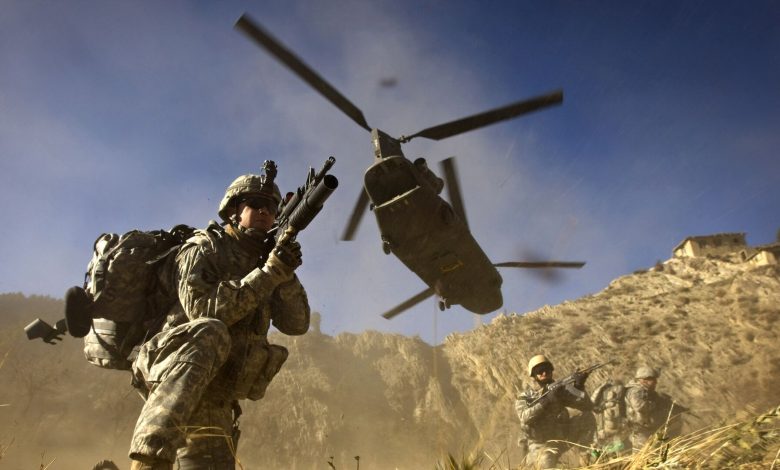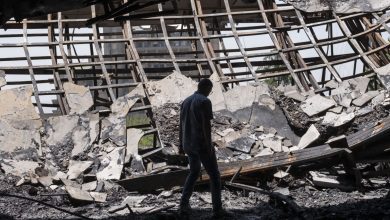Analysis: Military spending increases worldwide; What new military spending data says?

For 2022, researchers recorded a year-on-year jump of 3.7% in worldwide military expenditure. That marks an all-time high and follows several years of continuously higher spending.
“Irrespective of whether economies are doing better or worse than expected, the military is taking up more financial resources than in previous years, or previously ever in history,” Nan Tian, a senior researcher at SIPRI who helped author the report, told DW.
For those who follow world events, the doubling down on defense likely comes as no surprise. Russia’s all-out war against Ukraine has particularly led European countries to pay their military budgets renewed attention. Ever since the first Russian missiles struck Ukrainian cities in February 2022, country after country has announced new spending.
Defense outlays among NATO members — the Euro-Atlantic military alliance incorporating most European countries — have been going up since at least 2014. That is when Russia initially attacked Ukraine, illegally annexing the Crimean Peninsula and backing separatists in the eastern part of the country. NATO members agreed to meet a defense spending goal of 2% of national GDP by 2024, and many of them have been slowly working toward that target.
The Russian threat that all this money is meant to counter, however, has not materialized as frightfully as first imagined. The fact that Ukraine has so far managed to counter the Russian forces, which are theoretically superior, and hem them into a corner of the country, casts serious doubt on a broader danger to the rest of Europe.
Still, money for new military kit, and other defense-related spending, keeps pouring in. Russia may be a flop on the battlefield, Nan Tian said, but it could still be a potent adversary in cyberspace. Infiltration of and attacks on digital infrastructure can be low-cost, but high-damage.
And, of course, Russia maintains a considerable nuclear arsenal.
“I think for a lot of European countries, it’s really about how to beef up all aspects of defense,” he said. “The higher military spending is a sign of deterrence to Russia.”
What the numbers mean
A chicken-or-egg scenario has taken shape. As governments respond to a growing sense of unraveling security, they contribute to its further deterioration. At the same time, however, the SIPRI data shows that the spending spree may not be as pronounced as headlines and policymakers sometimes make it out to be.
While actual spending is up, topping a combined $2.2 trillion (€2 trillion) in 2022, as a share of GDP it is 0.1% lower than it was in 2013. That is despite double-digit increases over the past decade across many countries, including nuclear powers and those known for prioritizing armed forces, such as China (63%), India (47%), and Israel (26%).
In each of these countries, however, defense spending has declined as a percentage of national economic output.
The discrepancy suggests economic expansion has outpaced national budgets in areas such as defense, even if dollar figures can appear eye-popping; and rapid, record inflation has forced governments to spend more just to keep up.
In other words, they have lost purchasing power. A defense ministry faces similar price pressures when shopping for a squadron of fighter jets that a normal household does for buying a carton of eggs. Countries looking not just to maintain, but grow or upgrade their militaries, have to spend even more, which SIPRI’s reporting reflects.
“Despite countries having increased spending by 15%, in nominal terms, once you adjust for inflation, they actually decrease,” Nan Tian said, giving a ballpark example.
Inflation has also been a political problem, particularly in Germany, which early last year pledged an additional €100 billion for its armed forces in response to Russian aggression. After years of facing criticism for not spending enough, higher prices have muted its efforts to finally do so.
Not just bombs and bullets
The additional sum, which comes on top of Germany’s regular defense budget, is not reflected in the SIPRI data because none of it was ready to be spent last year. Even when the funds do start flowing, Germany may still fall short of NATO’s goals, according to an analysis by the German Economic Institute at the end of last year.
Also in Explained |Are guided bombs part of the latest Russian tactics in the Ukraine war?
Earmarked for a five-year period, it’s a chunk of change intended to buy Germany new weapons and other equipment. The SIPRI figures, however, cover broader ground.
National defense establishments are sprawling institutions, employing hundreds of thousands of civilian and military personnel, sometimes in far-flung and hostile regions, at great cost. These employees need to be fed and clothed, and have an administration to manage them.
More spending, therefore, does not necessarily translate into more weapons and upgraded fighting forces. Although the arms industry is booming and under pressure to keep up with demand, defense ministries are also paying to keep the lights on and toilets clean, like in any office.
The year-on-year increase also accounts for military aid, which has seen an exceptional increase due to Russia’s war in Ukraine. The United States alone has contributed more than $47 billion to Ukraine’s defense, according to the Kiel Institute, a German economic think tank.
The portion of spending that does go directly to weapons varies by country, and it can be difficult to assess how effectively it is invested. That’s because there is a “lag effect,” SIPRI researcher Nan Tian explained.
Weapon systems are large and complex and can take years to develop, procure, and press into service. Many of the aircraft, missile batteries, and armored vehicles considered top-of-the-line that Ukraine has pushed to receive from NATO members are decades old. Some of the latest spending, SIPRI notes, is going towards modernizing nuclear forces that most hope are never used.
How much bang taxpayers get for their buck spent on defense is always a question when such huge sums of money are at play. That is especially the case for the US, which is by far the leader in military output. In 2022, the official US defense budget came in at $877 billion (€790 billion), according to the report. That accounts for 39% of global military expenditures.
Taken as a percentage of national GDP, this defense spending may be less than it was in 2013 and a far cry from Cold War highs of nearly 10%, but no matter how you crunch the numbers, Nan Tian said it still enabled the US to project power and “spread that influence to the rest of the world.”
China, which the US says is a major reason for increases to the defense budget, is a distant second, putting out $292 billion (€263 billion) last year. Despite the disparity between the world’s two largest economies, many US officials and security analysts are warning of China gaining a military edge.
The extent to which that is true may have to do with where that money is spent. Whereas China is flexing its military muscle in its Pacific neighborhood, the US seems intent on maintaining a security footprint around the world — a position it has held since the Second World War.





